Organic & Other Seeds
Forage Herbs & Legumes
PLANTAIN (Plantago Lanceolata)
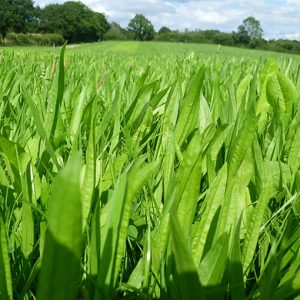 Plantain is a perennial herb that performs well in a range of pastures, particularly those that are less fertile and more open. The well-known weed plant has been developed into two vigorous and erect-growing cultivars. They are highly palatable to animals, establish rapidly, are drought and pest tolerant, and have a high mineral content. Grazing management should aim to minimise seedhead frequency as leafy plantain is of high quality but plants going to head have little feed value. Used successfully to boost feed availability during the drier months in New Zealand, normally spring sown and strip / paddock grazed by cattle or sheep.
Plantain is a perennial herb that performs well in a range of pastures, particularly those that are less fertile and more open. The well-known weed plant has been developed into two vigorous and erect-growing cultivars. They are highly palatable to animals, establish rapidly, are drought and pest tolerant, and have a high mineral content. Grazing management should aim to minimise seedhead frequency as leafy plantain is of high quality but plants going to head have little feed value. Used successfully to boost feed availability during the drier months in New Zealand, normally spring sown and strip / paddock grazed by cattle or sheep.
CHICORY (Cichorium intybus)
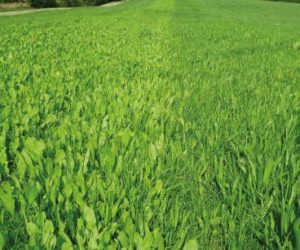
Chicory is a perennial herb with a deep tap root, hence it’s drought tolerance. High in protein of 18 – 22%, very digestible in its leafy stage, it can be a useful addition for improving milk or meat production. It is also high in minerals and quick to re-grow. Ideally rotationally grazed, care should be taken not to graze too tightly when the “crown” can be damaged, killing the plant. Best sown in a mixture with perennial ryegrasses and clovers.
Both chicory and plantain are a useful addition to any grazing ley as they are likely to increase animal intake due to a more diverse grazing sward, and improve milk or meat production due their high protein and digestibility. The ground needs to be weed free prior to establishment as chemical control of broad leaved weeds is difficult.
The photo above, taken on 27th July, shows the pure stands of chicory and plantain we planted late May at Foxley. Whilst both established easily, the chicory was quicker and produced a bigger crop. After a cut of haylage in August, the re-growth was grazed by young stock in September. We noticed the cattle preferring to graze the chicory and the plantain prior to grazing the rest of the field, which was planted to our long term FS No 5 ley mixture.
LUCERNE (Medicago sativa)
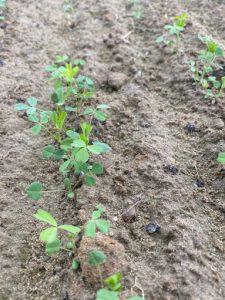
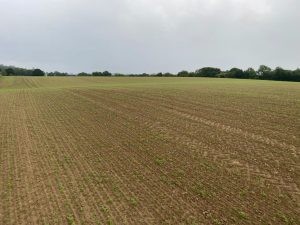
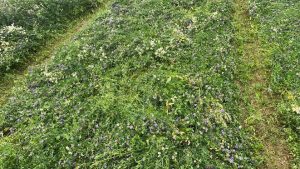
Lucerne is a perennial legume suited to lighter soils and drier areas. Able to fix its own Nitrogen and persistent for 5 years plus, producing high protein fodder, it can be a useful alternative forage. It is slow to establish fully, not suited to heavy grazing and must be given time to recover. The resultant fodder is high in protein and an excellent complement to maize. Imported high quality lucerne hay is now always available as alternative to cultivating yourself.
SAINFOIN (Onobrychis viciifolia)
 Sainfoin is a perennial legume herb with an erect growth habit, producing pink flowers. It is highly palatable to animals and has an excellent nutritional balance. It can be grazed, or fed as hay or silage. It thrives on alkaline soils, provides its own nitrogen and needs very little phosphate. Sainfoin has a tap root that grows down to great depth, making the plant highly drought resistant.
Sainfoin is a perennial legume herb with an erect growth habit, producing pink flowers. It is highly palatable to animals and has an excellent nutritional balance. It can be grazed, or fed as hay or silage. It thrives on alkaline soils, provides its own nitrogen and needs very little phosphate. Sainfoin has a tap root that grows down to great depth, making the plant highly drought resistant.
LUPINS (Lupinus angustifolius)

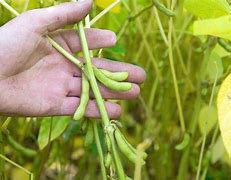

The need to reduce our reliance on imported soya is generating more interest in LUPINS as a high quality protein source. New blue Lupin varieties can be grown successfully in the midlands and further North. Drilling mid-April onwards and combining late August to mid-September, a yield of 1 to 1.5 tonnes per acre can be worked towards. Due to it being an eff ective Nitrogen fi xing crop, only a small amount of Nitrogen fertiliser is required to aid establishment. Lupins are an excellent entry for wheat, improving soil structure and providing seed bed Nitrogen. With a feed energy value of around 11MJ of ME per kg of DM, and 30 – 35% protein, successful cultivation could do much to reduce imported Soya and Ammonium Nitrate use on farm.
Organic Seeds
Whilst our site in Worcestershire is not approved to mix organic seeds, we can supply a full range of high quality, high performance organic seeds & mixtures which we source from a soil association approved merchant.
Please call for more information: 01299 832538 or 07872 964814
Fodder Crops
We also carry in stock the full range of fodder and game cover crops:
- MAIZE FOR FORAGE & FOR BIOGAS – Please enquire for details.
- KALE – Maris Kestrel, Thousand Head, Caledonian – ideal for out wintering cattle.
- STUBBLE TURNIP – Samson, Vollenda – quick growing sheep keep, ready to graze within 12 weeks of sowing.
- FODDER RAPE – Quick growing sheep grazing, ideal for mixing turnips.
- SWEDES – Airlie, Kenmore, Gowrie, Magres – a high energy crop with big yields that needs a longer growing season.
- GAME COVERS – Maize, Millet, Sorghum, Sunflower, Quinoa, Canary Grass, Utopia, Mustard.
- FODDER BEET –
A high yielding, high energy crop that will deliver palatable fodder that both sheep and cattle thrive on. Mostly lifted and clamped, it is also increasing grazed in situ through the winter months. Needs a good depth of soil and plenty of fertility. Sow late March / April for harvest November onwards. Varieties vary in the dry matter content, depth of root in the ground, and flesh and skin colour. Lower dry matter types for grazing in situ and milder climates, high dry matter types for digesters and colder climates. We have successfully grown and outwintered cattle at Foxley on Fodderbeet, and will do so again.

Please enquire for the correct selection for your field.
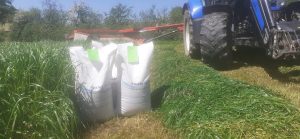
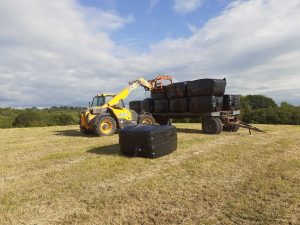
Please call to discuss your requirement 01299 832538 or 07872 964814.
FREE delivery on all orders over £250
Please call for more information




